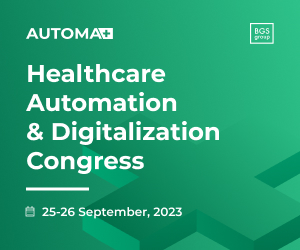Antibiotics have revolutionized human medicine in the twentieth century. Deadly diseases such as streptococcal pneumonia or gangrene became curable, and also other advances of modern medicine like transplantations, chemotherapy, and intensive care procedures dramatically increased their rates of success due to the availability of antibiotics to counteract infectious complications.
As long as antibiotics remain active, successes of modern medicine are safe. However, following antibiotic use, bacteria may become resistant to one or more antibiotics, up to so called “difficult-to-treat resistance”, which can impair survival chances severe bacterial infections. This owing to the reduced or absent activity of available antibiotics against highly resistant bacteria. Against this backdrop, up to 300 million people have been estimated to possibly die by antibiotic-resistant infections by 2050.
Fortunately, many antibiotics have become available in the past ten years that have increased the number of options clinicians have to treat highly resistant bacteria. However, both development of antimicrobial resistance and its spread (i.e., from a bacterium to other bacteria and form a patient to other patients) are dynamic processes that can grow exponentially if antibiotics are misused (e.g., unnecessarily prolonged antibiotic therapy once the infection is cured, prolonged administration of broad-spectrum empirical antibiotics without etiological diagnosis, suboptimal antibiotic dosage to clear the infection) and infection-control measures to reduce cross-transmission of resistant bacteria between patients are not adequately implemented.
All of this does not mean that novel antibiotics should not be used because of the fear of further selection of resistance, otherwise the advantages they can provide in terms of patients’ health will be lost. Conversely, they should be used wisely (for the right indication, at the right dose, for the right time and not beyond). Improving antibiotic use this way needs complex multidisciplinary interventions, including, amongst others, educational efforts, proactive review and feedback on and about antibiotic use, and improved etiological diagnosis (i.e., identification of the causative agent of the infection).
In this latter regard, the availability of rapid molecular tests is rapidly changing the way infectious diseases specialists choose antibiotics to treat severe bacterial infections. The rapid availability of results provides clinicians with information on the causative agent of infection and the presence of mechanism/s of resistance to a given antibiotic within few hours after the onset of the infection. This is far shorted compared with the two or three days usually necessary to obtain the same information with standard culture-based diagnostics. However, two important challenges will be faced by clinicians and researchers in the forthcoming years:
- There is an increasing need for high-certainty evidence from randomized clinical trials on the magnitude of the beneficial effects on relevant patients’ outcome and antimicrobial stewardship indicators of implementing rapid molecular tests in the laboratory workflow.
- There is a need for a novel expertise of infectious diseases specialists in interpreting the results of rapid molecular tests, in order to guide appropriate changes in antibiotic therapy based on tests results.
With regard to this second point, molecular tests have some peculiarities that should be always taken in consideration by the expert clinician interpreting the test results:
- Generally, molecular tests identify a limited spectrum of bacteria and of determinants of antimicrobial resistance, therefore clinicians should know well which type of bacteria and of resistance mechanisms cannot be detected by the employed tests, in order to correctly make their therapeutic choices also when tests results are negative.
- Results of molecular tests about resistance determinants are not a conclusive proof of resistance (the mechanism may be present, but the bacterium may remain susceptible to a given antibiotic due to, e.g., reduced production of the detected resistance mechanism)
In conclusion, improving the use of novel technologies for the rapid etiological diagnosis of severe bacterial infection will be crucial in the near future, although the highlighted challenges about their use and implementation should not be overlooked. This could be of particular important in a post-pandemic scenario. Indeed, misuse of antibiotics during the peaks of the COVID-19 pandemic has been repeatedly reported, with up to 60-100% of hospitalized patients with COVID-19 receiving antibiotics in the suspicion of bacterial super-infection of the viral diseases, although only 4-6% of these patients were proven to truly have bacterial infections. This misuse may have ultimately accelerated the development and spread of antibiotic resistance. This is another reason why antibiotics need to be used more wisely in the future, and the future has started already.












